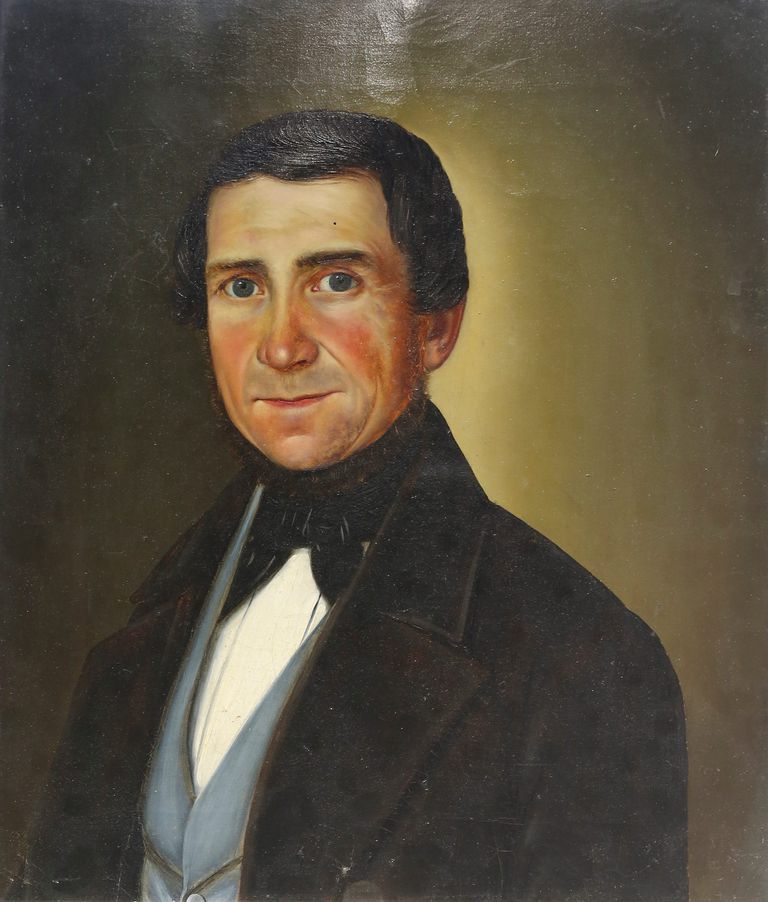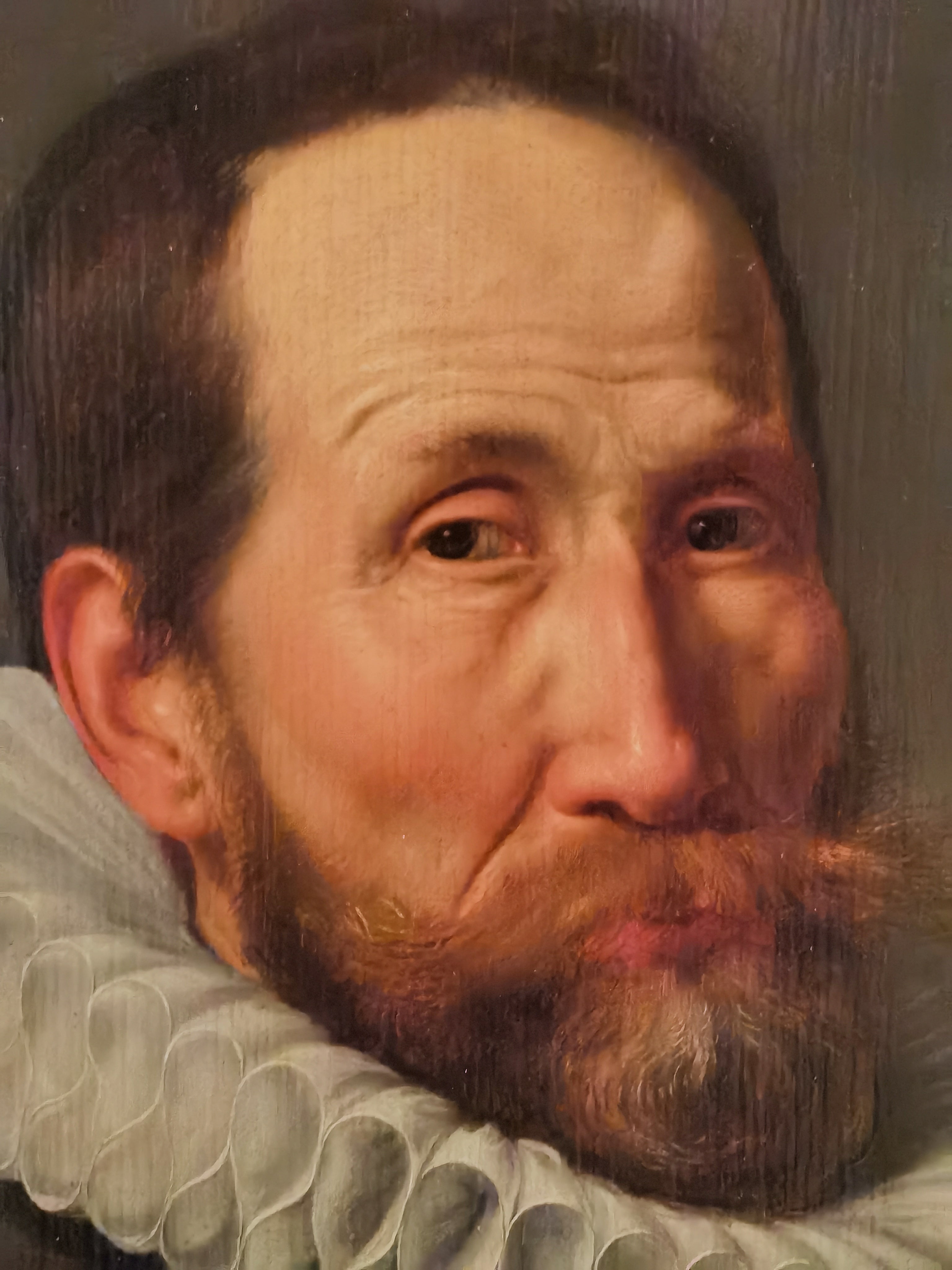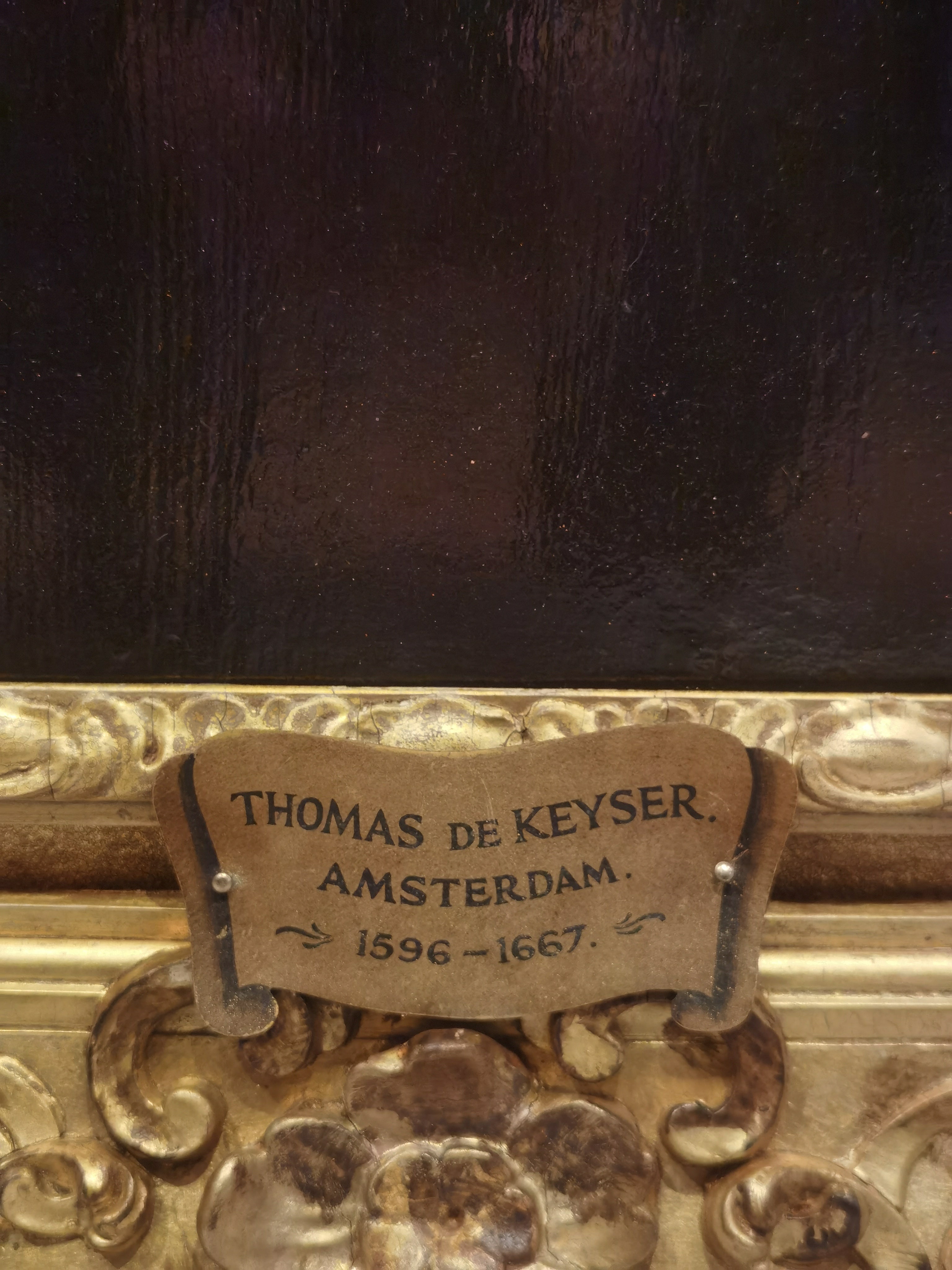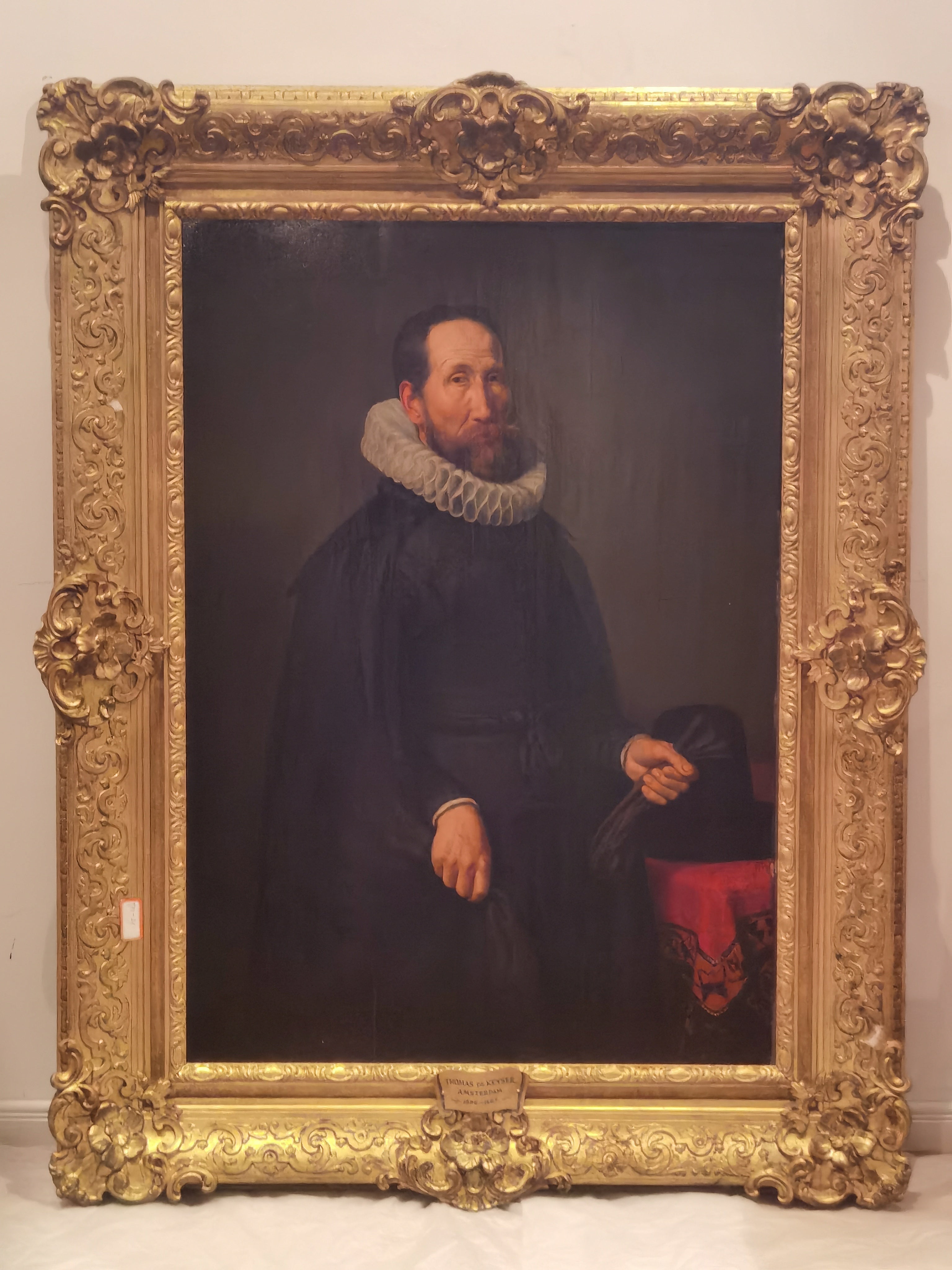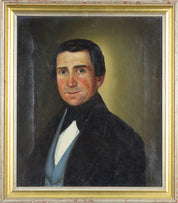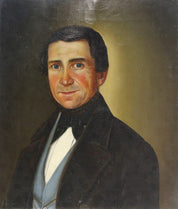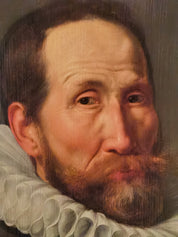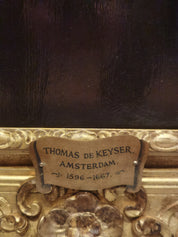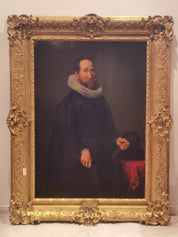Portrait of a Gentleman
Thomas de Keyser
Artwork Details
Artwork Description
Title:Portrait of a Gentleman
Artist
Thomas de Keyser
Date
n.d.
Medium:
Oil on canvas
Dimensions
42.1 x 29.5 in (107 x 75 cm)
1. Artwork Identification
This elegant oil on canvas, Portrait of a Gentleman, is attributed to the Dutch master Thomas de Keyser (c. 1596–1667), one of the foremost portraitists in Amsterdam during the early 17th century. The sitter is presented three-quarter length against a dark neutral background, richly dressed in black robes with a crisp white ruff and seated beside a table draped with red cloth bearing heraldic motifs. The subject's introspective expression and carefully modeled hands are rendered with the subtle precision characteristic of de Keyser’s style. The painting is housed in a deeply carved and gilded 17th-century-style frame.
2. Artistic Style and Influences
Thomas de Keyser was renowned for his intimate portraiture, often executed on a smaller scale than that of his contemporaries. His meticulous approach to detail, mastery of chiaroscuro, and ability to convey psychological depth made him the most sought-after portraitist in Amsterdam until Rembrandt’s rise in the 1630s. Trained under the influence of his father, architect Hendrick de Keyser, and shaped by early Baroque naturalism, Thomas’s work bridges the refinement of Dutch Mannerism with the emerging realism of the Golden Age.
3. Historical Context
De Keyser’s rise coincided with Amsterdam’s transformation into a cultural and economic center of Europe. His clients were members of the mercantile elite—burghers, scholars, and civic leaders—who desired portraits that reflected both personal dignity and societal status. This portrait reflects that milieu, projecting restraint, intellect, and understated affluence. The work likely predates 1640, when de Keyser began devoting himself to his family’s stone business and gradually ceased painting.
4. Provenance
Provenance documentation can be provided upon contact.
5. Condition and Conservation
The painting is in very good condition. Minor wrinkling of the surface is visible, as well as slight pigment darkening, both of which are consistent with the age and Medium: of the work. The canvas is stable and the integrity of the paint surface is preserved. The frame exhibits signs of age but remains structurally sound and visually complementary to the portrait.
6. Artistic Significance
Thomas de Keyser’s portraits are treasured for their intimate scale, formal precision, and keen psychological insight. As a key precursor to Rembrandt, his work played a pivotal role in shaping the trajectory of Northern European portraiture. Portrait of a Gentleman exemplifies his signature balance of warmth and restraint, capturing not only the likeness but also the cultivated presence of Amsterdam’s Golden Age citizenry. This work stands as a testament to de Keyser’s contribution to the canon of 17th-century Dutch art.



